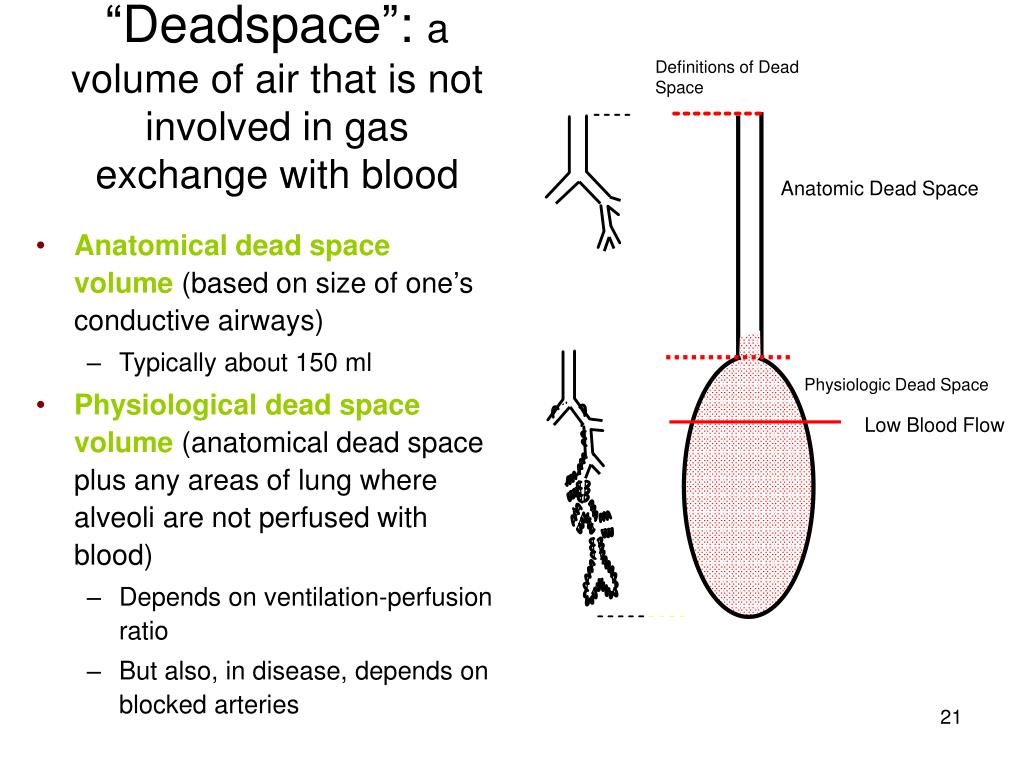
However, differences in the exact way of measuring this space result in clinically significant different results and, therefore, debate remains about the true value of this measured parameter.Ĭopyright © 2023, StatPearls Publishing LLC. Indeed, it may serve as a prognostic factor in patients with acute repository distress syndrome (ARDS) who require ventilation. Alveolar (distributive) dead space is the volume of air that reaches alveoli but never participates in respiration.

This includes volume in upper and lower respiratory tract up to and including the terminal bronchioles. This phenomenon has clinical significance because, both in healthy and impaired lungs, properly calculating and accounting for this non-physiological space is important for the proper respiratory care of ventilated patients. Anatomical (serial) dead space is the volume of air that never reaches alveoli and therefore never participates in respiration. This is therefore termed anatomical dead space as it serves no respiratory function. Anatomic dead space is an important phenomenon in respiratory physiology whereby, owing to the fact that upper airways do not function as locations for gas exchange, and because of the tidal nature of ventilation, there is always a fraction of the inspired air that does not perform a physiologic function of exchanging carbon dioxide for oxygen.


 0 kommentar(er)
0 kommentar(er)
